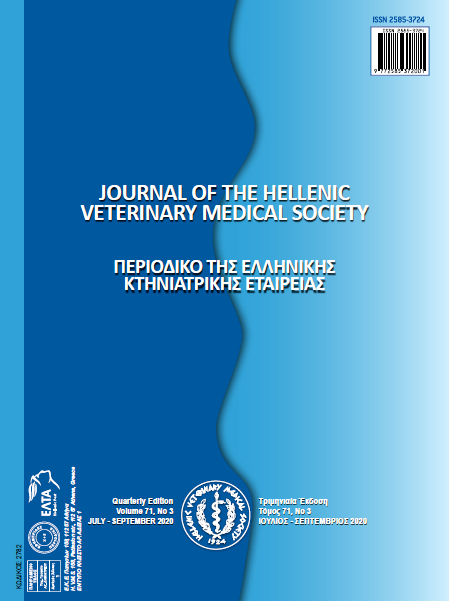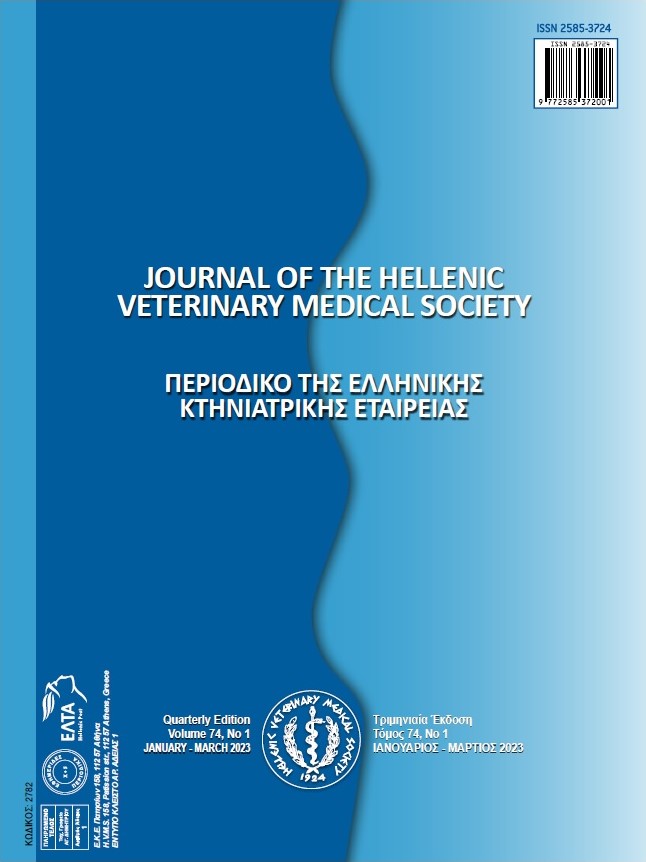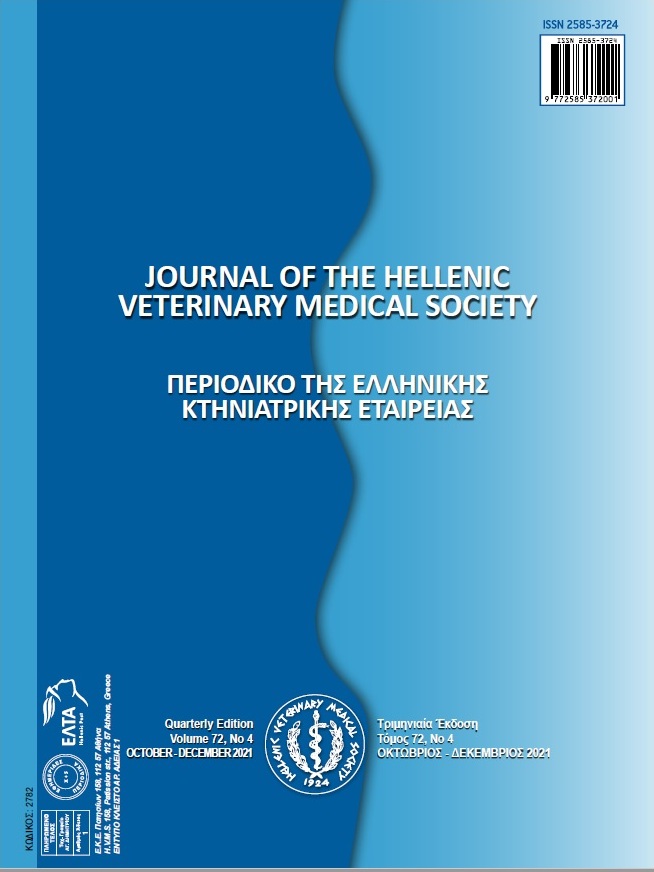Humeral osteochondrosis in dogs: Long-term outcomes of 10 clinical cases

Abstract
Humeral osteochondrosis (HO) is a complex growth cartilage disorder characterized by disruption in the process of endochondral ossification. This disorder, often seen in dogs, involves the separation of a segment of articular cartilage from the underlying bone, leading to degenerative joint disease and lameness. This retrospective study aims to compare the outcomes of conservative and surgical treatment of HO in ten instances. The study was conducted at the Surgery and Obstetrics Unit of the Companion Animal Clinic, Department of Veterinary Medicine, Aristotle University of Thessaloniki, Greece. Nine client-owned dogs of varying breeds, both sexes, aged 4–8 months, and weighing 10–35 kg participated in the study. The duration of lameness prior to their first consultation ranged from 1 to 3 months. All participants were thoroughly examined clinically, orthopedically and radiographically. This helped in determining both the location of osteochondrosis, whether in the shoulder or elbow joint, and the degree of severity. One dog, diagnosed with bilateral HO, accounted for two of the ten cases. Nine cases exhibited lesions on the caudal aspect of the humeral head, whereas one showed them in the medial part of trochlea humeri. Six cases underwent surgical treatment, which included the removal of the cartilage flap, curettage, and drilling of the subchondral bed. The remaining four cases received conservative treatment such as activity restriction, weight reduction and administration of non-steroidal anti-inflammatory drugs. Progress was evaluated through a dog mobility questionnaire completed by the owners. Findings showed that 1-month post-operation, surgically treated dogs, except for two, returned to full activity. The two exceptions experienced low-grade lameness post-strenuous exercise. Dogs receiving conservative treatment were not restricted, and their response to medical therapy varied, showing degrees of lameness, especially when conditions were favorable for the manifestation of osteoarthritis. The results obtained suggest that dogs treated surgically demonstrated better long-term functional outcomes compared to those treated conservatively. Recurrent lameness in some of them appears to be due to the development of degenerative changes in the joint.
Article Details
- Come citare
-
Krystalli, A., Papaefthymiou, S., Bairamis, T., Patsikas, M., & Prassinos, N. (2025). Humeral osteochondrosis in dogs: Long-term outcomes of 10 clinical cases. Journal of the Hellenic Veterinary Medical Society, 76(2), 9391–9402. https://doi.org/10.12681/jhvms.37461
- Fascicolo
- V. 76 N. 2 (2025)
- Sezione
- Case Report

Questo lavoro è fornito con la licenza Creative Commons Attribuzione - Non commerciale 4.0 Internazionale.
Authors who publish with this journal agree to the following terms:
· Authors retain copyright and grant the journal right of first publication with the work simultaneously licensed under a Creative Commons Attribution Non-Commercial License that allows others to share the work with an acknowledgement of the work's authorship and initial publication in this journal.
· Authors are able to enter into separate, additional contractual arrangements for the non-exclusive distribution of the journal's published version of the work (e.g. post it to an institutional repository or publish it in a book), with an acknowledgement of its initial publication in this journal.
· Authors are permitted and encouraged to post their work online (preferably in institutional repositories or on their website) prior to and during the submission process, as it can lead to productive exchanges, as well as earlier and greater citation of published work.





